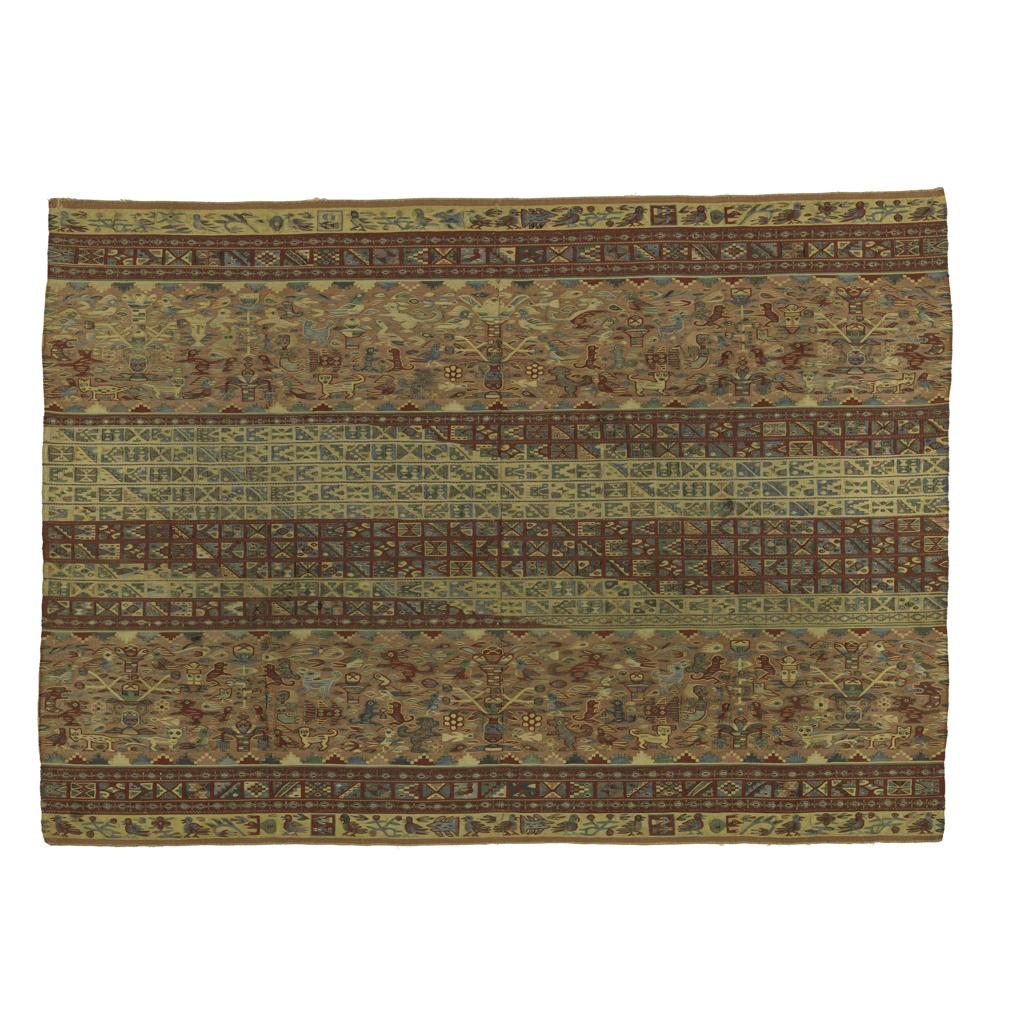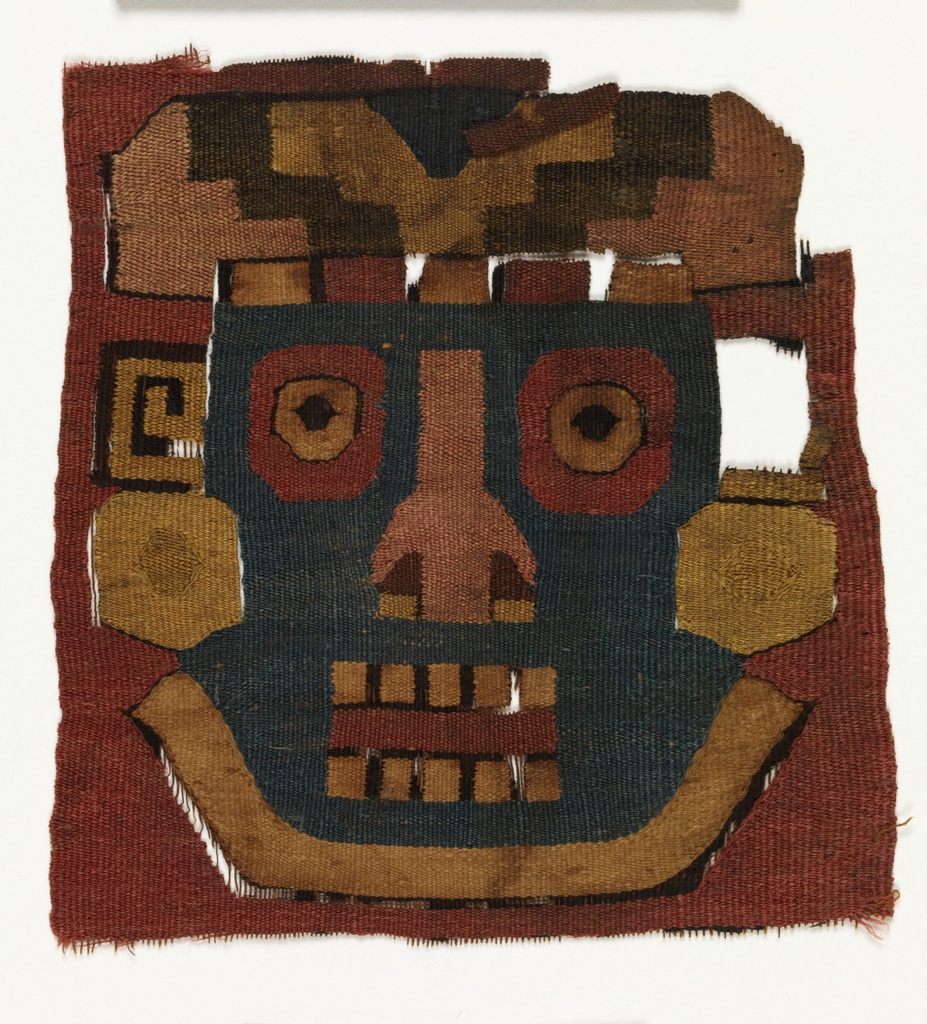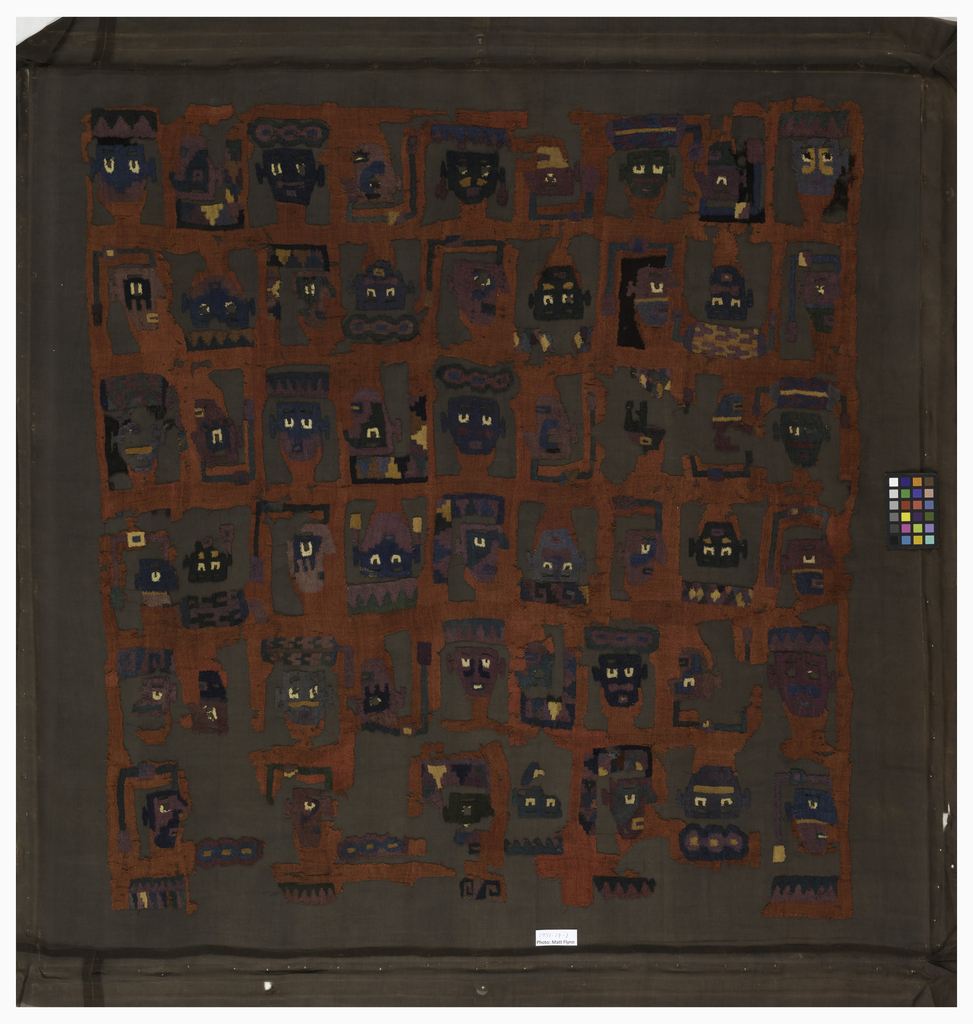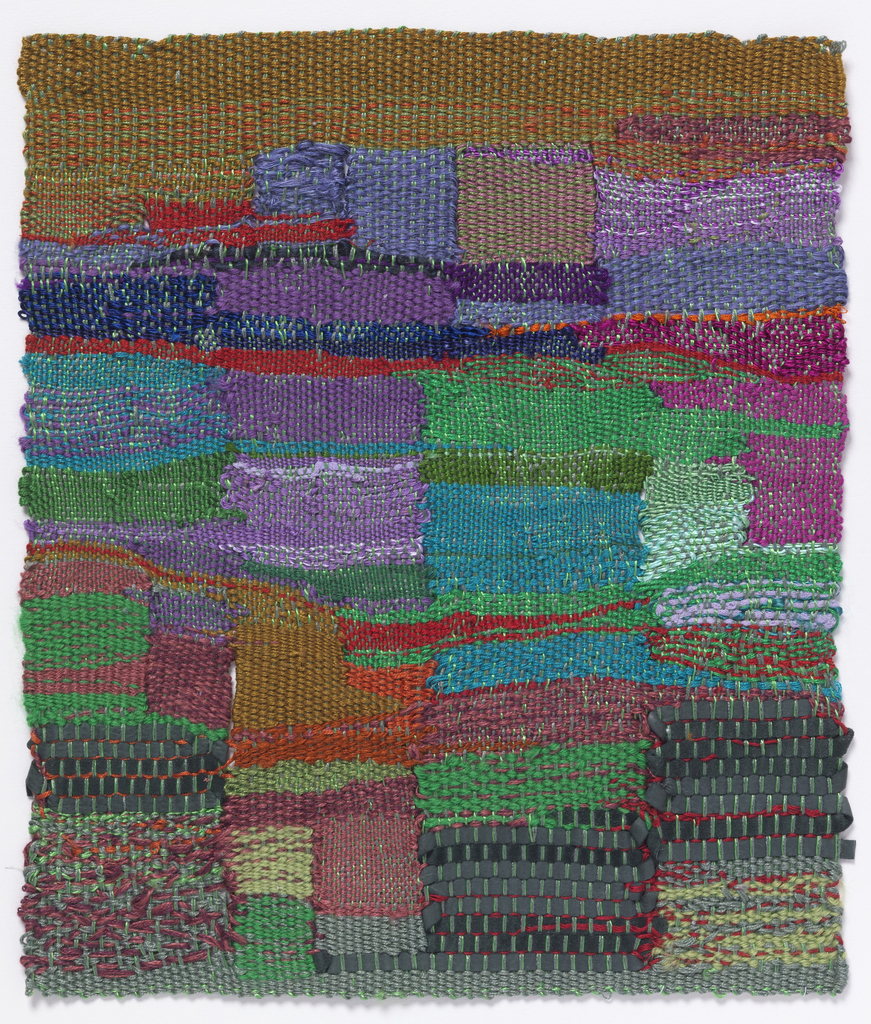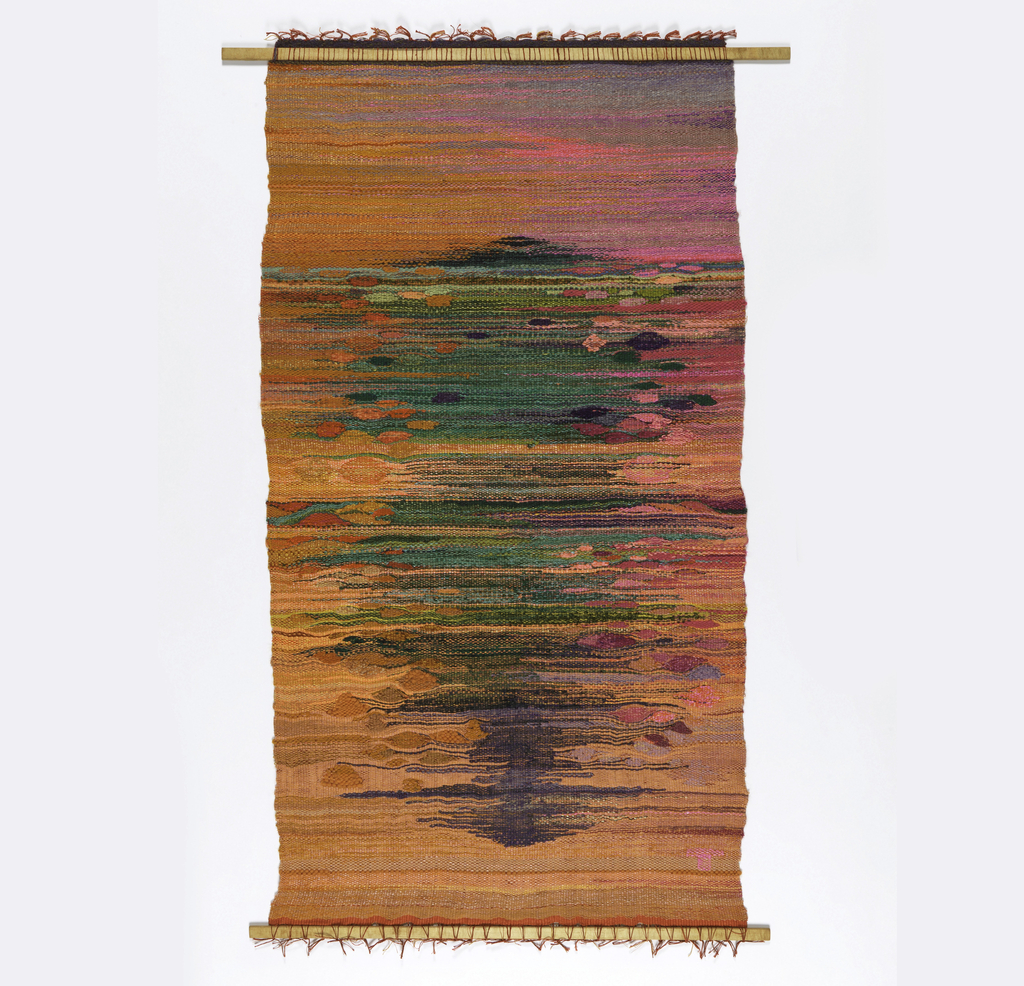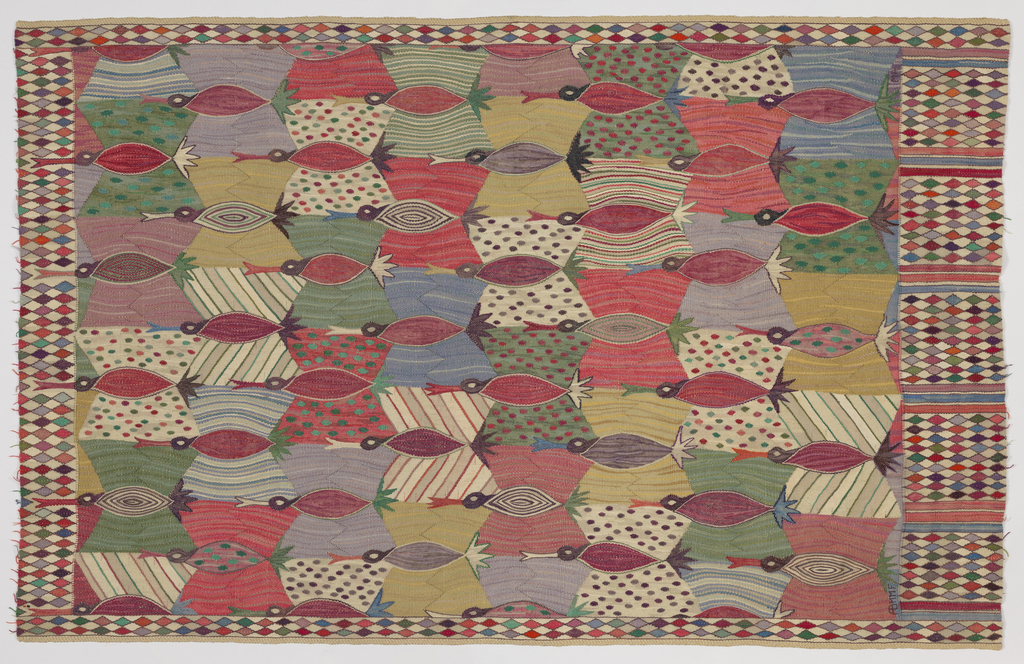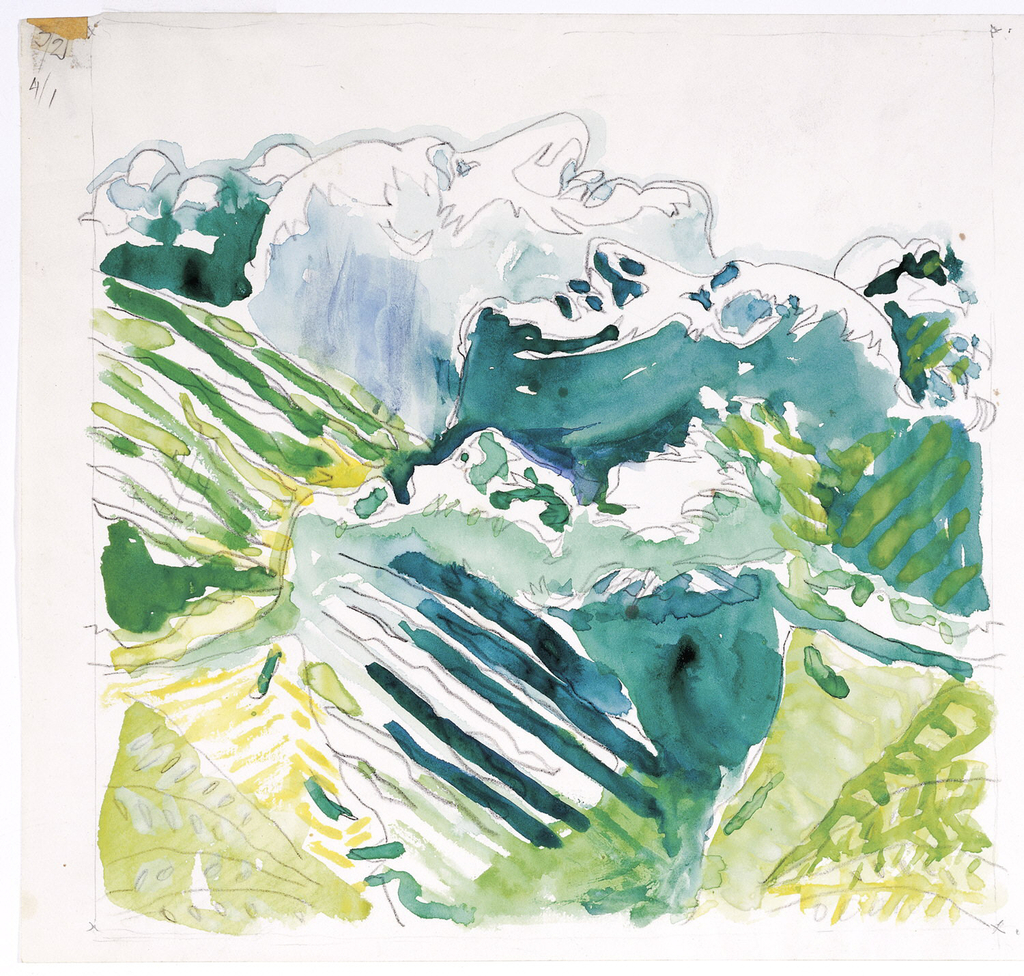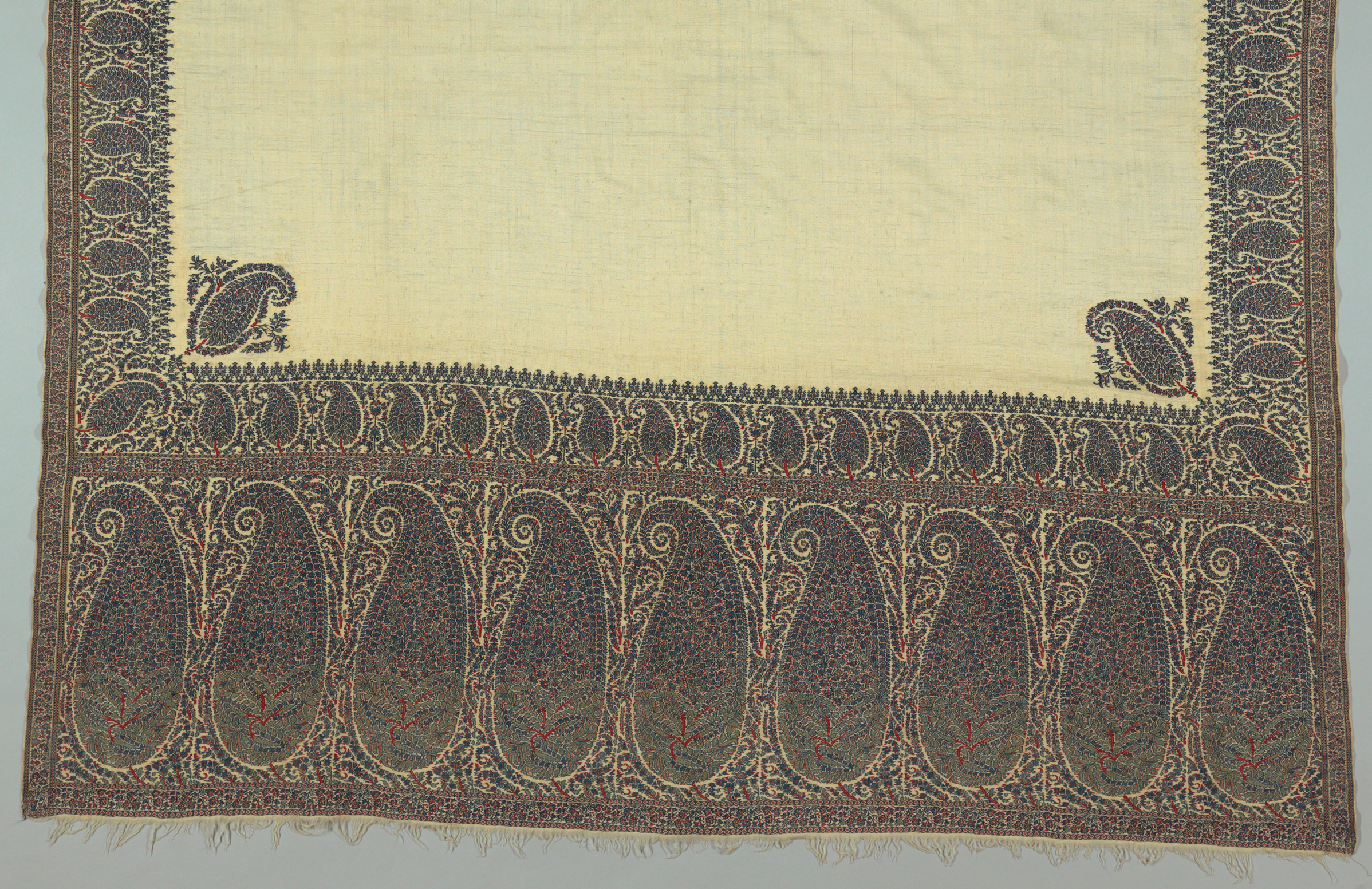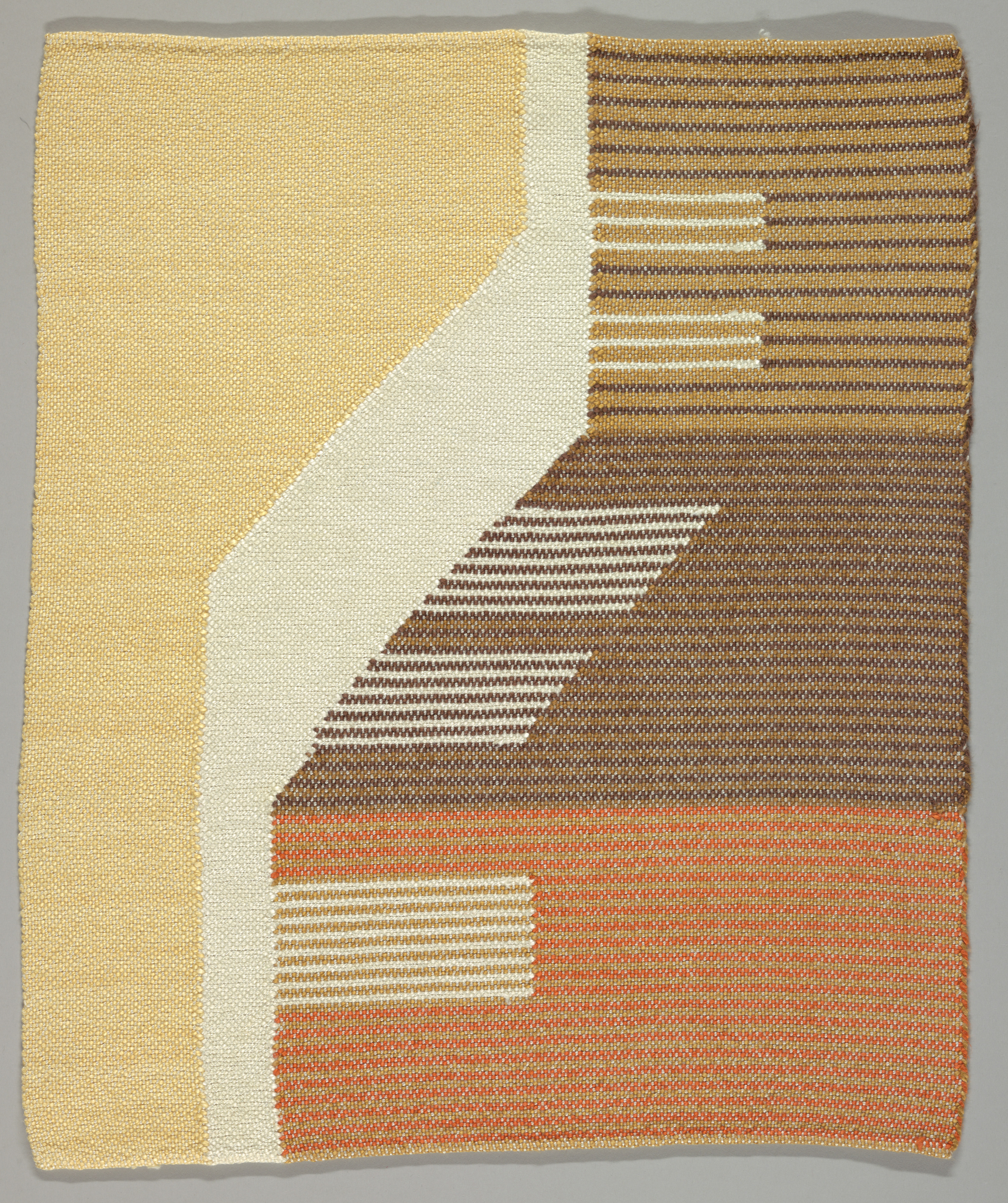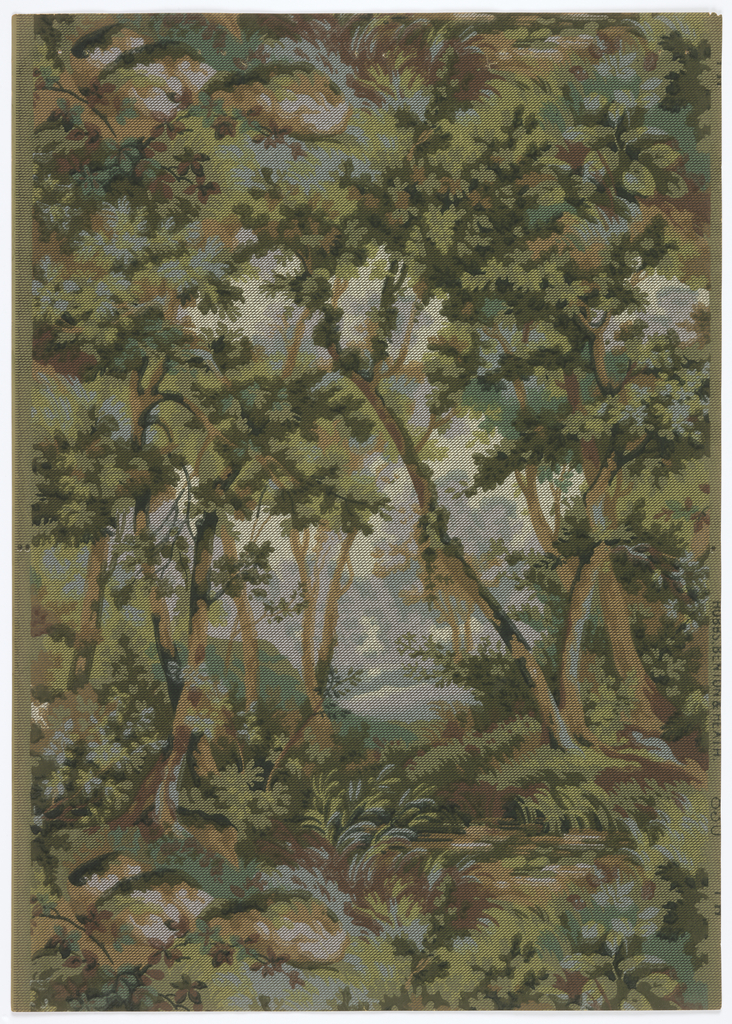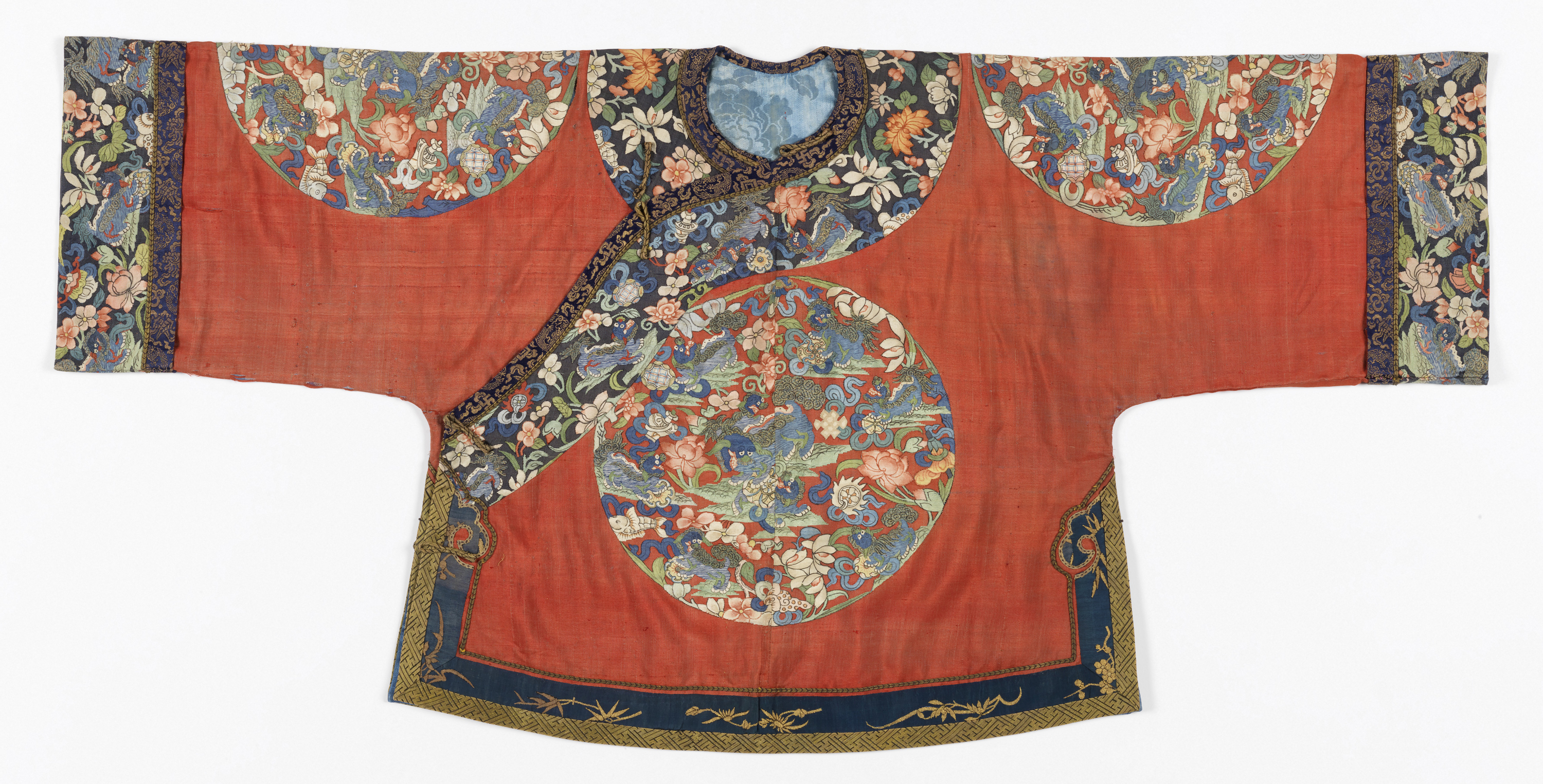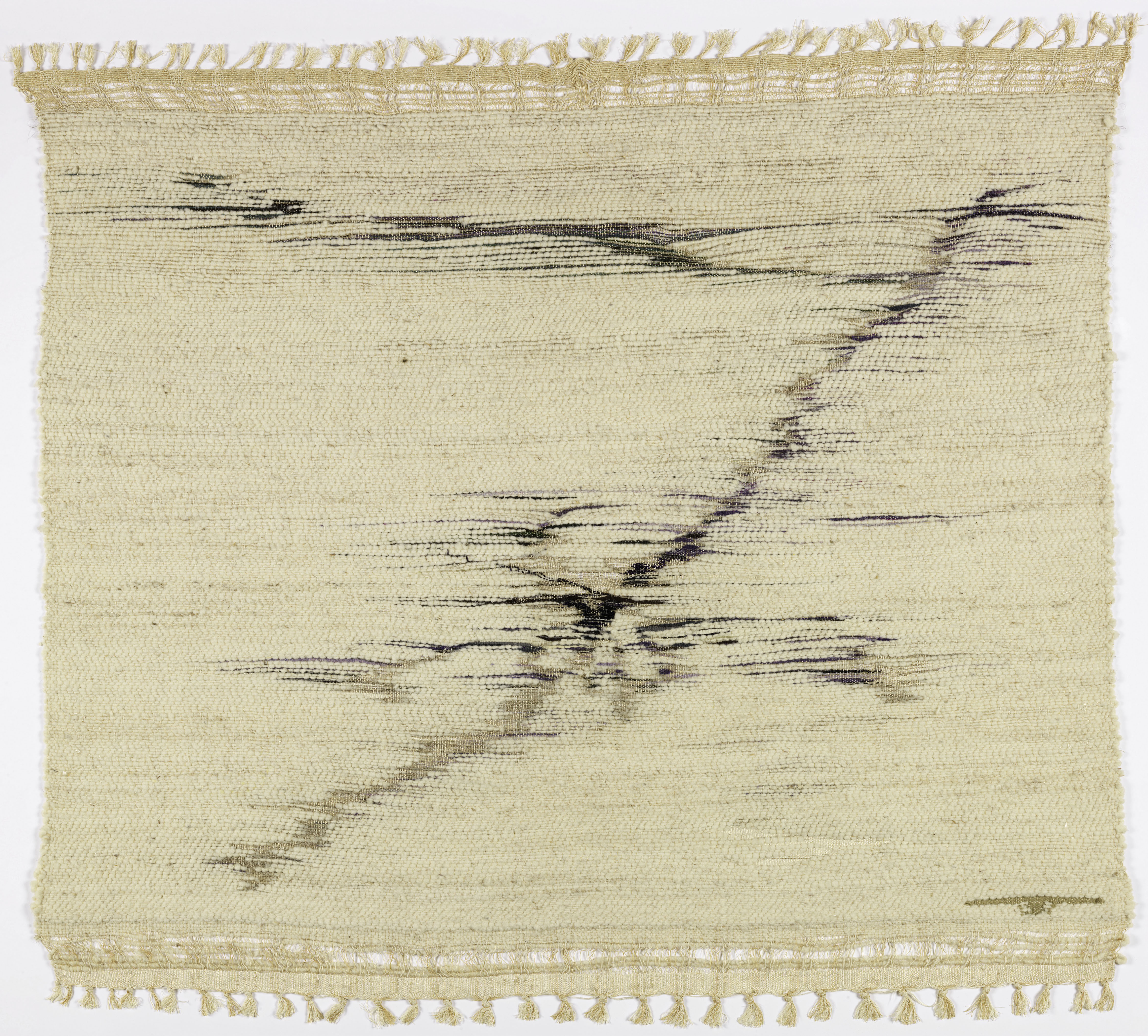This post was originally published on December 20th, 2012. This beautiful cloth is a woman’s shoulder mantle, called a lliclla in the Quechua language of the Inca Empire, and was made during the colonial period of Peru. A perfect blend of the cross-cultural elements of the 16th- and 17th-century era of global trade, the Chinese...
Author: Christine Giuntini In celebration of the third annual New York Textile Month, members of the Textile Society of America will author Object of the Day for the month of September. A non-profit professional organization of scholars, educators, and artists in the field of textiles, TSA provides an international forum for the exchange and dissemination...
The production of this type of cloth was confined to a brief period of great artistic achievement in the Nasca region. The portrait heads appear to be of human rather than deity figures, and seem to represent individuals of varied status and perhaps ethnicity, signaled by the wearing of certain accoutrements. Features of the figures...
Author: Patricia Malarcher September is New York Textile Month! In celebration, members of the Textile Society of America will author Object of the Day for the month. A non-profit professional organization of scholars, educators, and artists in the field of textiles, TSA provides an international forum for the exchange and dissemination of information about textiles...
Author: Kathleen Magnan September is New York Textile Month! In celebration, members of the Textile Society of America will author Object of the Day for the month. A non-profit professional organization of scholars, educators, and artists in the field of textiles, TSA provides an international forum for the exchange and dissemination of information about textiles...
Author: Desiree Koslin September is New York Textile Month! In celebration, members of the Textile Society of America will author Object of the Day for the month. A non-profit professional organization of scholars, educators, and artists in the field of textiles, TSA provides an international forum for the exchange and dissemination of information about textiles...
At first glance, this design drawing for the tapestry Our Mountains by Trude Guermonprez (American, b. Germany, 1910–1976) may appear to be a simple mountain landscape. A closer look reveals that the cool blue-green peaks and valleys are actually formed by three reclining faces in profile. In the background, the face of Guermonprez’s husband John...
In English, the common droplet-shaped motif found on Kashmir shawls is named after the Scottish town Paisley, which became famous for its imitation shawls in the first half of the 19th century. Locally, it is called boteh (Persian: بوته ; meaning “shrub”) or buta in the Indian subcontinent. Elsewhere on Object of the Day, Deputy Curatorial Director and Head of Textiles...
This textile study sample was woven by Lydia van Gelder in preparation for a larger wall hanging, “Houses on a Street” that she created for the 1939 Golden Gate International Exposition in San Francisco. Serving as a diminutive sample for the larger piece, it is tapestry woven – double interlocked with extended dovetailing for shading....
This is another landscape paper that has been given a slightly different treatment. The viewer is looking through a dense grove of trees, into a clearing of some sort, followed by more trees in the distance. The colors in the foreground are darker and more saturated, getting lighter as they recede into the distance, creating...
The Qing imperial rulers (1644-1911) were of Manchu ethnicity, and ruled over a mostly Han population. For centuries, Manchu women were required to wear long one-piece robes and Han women two-piece outfits that included a jacket and skirt. Featuring elements of both traditions, this Manchu jacket demonstrates the increasing fusion of these fashions in the...
With a deeply personal connection to weaving, Lenore Tawney’s craft was not an exercise in patience, but in devotion. Some of her works have even been called “altars of meditation” for their quiet spirituality. “Spring Thaw” is a fine example of the delicate and ethereal quality of her work. The background is creamy white, with...
See how tapestry weaving works in this short video. Nadia Yaron demonstrates three types of tapestry joins in her Brooklyn storefront studio, Nightwood. What differentiates tapestry weaving from plain weaving is that in a tapestry, the weaver changes weft threads at will as she weaves them across the piece. By doing this, she can create...
